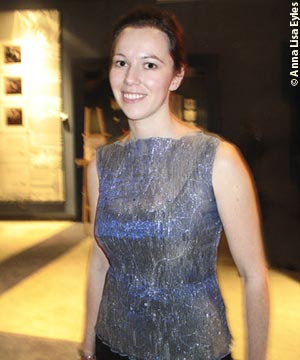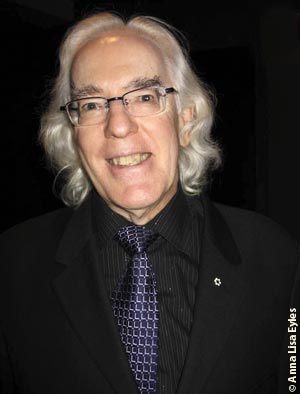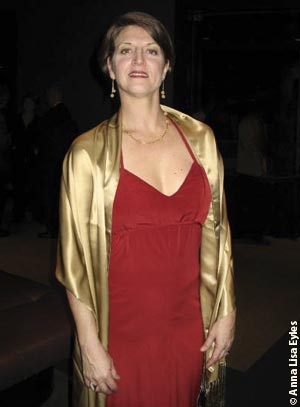|
Each of Richardson’s three movements featured a dramatic violin solo by Michael Schulte, her husband. The small ensemble of two violins, viola, cello and bass, was conducted by Robert Aitken. Pizzicato, tempo changes, gypsy fiddle flights and chromatic descents became almost lyrical, dissonant or not. As Colin, an audience member observed, “She grows on you”’, but then, acquiring a taste is necessary for many of the best things life has to offer.
Many special properties of Gubaidulina’s works have been documented, including the structured symbols and spiritual/philosophical threads woven into the fabric of her works. In fact, entire theses have been written. Certainly, there are too many interesting components to mention them all here but what clearly stood out in the works performed was Gubaidulina’s evolution of Schoenberg’s “Klangfarbenmelodie”, (meaning Sound-Colour-Melody) and musical imagery which immediately provide the listener with a colourful understanding of the setting and mood of the story which will be told.
Schoenberg’s invention of the sound-colour-melody technique means that a few notes are played by one instrument and then continued by the next instrument and so forth. Gubaidulina expands on this and has each new instrument take up the note of the last instrument during its playing, then sustain the note in a seamless transition from one instrument to the next. The effect is one of mystery and enchantment consistent with the story being told, underscoring the interdependence of all things in nature.
Flautist Robert Aitken, along with violist Steven Dann and harpist Erica Goodman, opened the program with Gubaidulina’s The Garden of Joys and Sorrows, a work in three movements. Aitken’s opening notes painted the setting and set the tone. The listener immediately understands they are in a garden at early morning. Influenced by Bartok’s dissonance and giving an unmistakable nod to Japanese classical music in the first movement, Gubaidulina sets the backdrop for the story of this 1980 work. Goodman’s prolonged single note vibrato combined with the fluctuating chromaticism of the players, provides texture and tension. Long, melodic phrasing from Aitken’s flute, the music echoing from one of Gubaidulina’s creatures to another, build to the climax and timeless resolution at the close of day. The listener is so entirely engrossed in the story that like a really good book, we wish it would continue.
In Croce, first composed in 1979, means On the Cross, and features the crossing of two instruments, the cello and bayan, an instrument similar to the accordion but with added tonal colour and fullness in the bass notes. This was originally composed for cello and organ. The work performed was rearranged by Elsbeth Moser in 1991, with Gubaidulina’s approval. The chromatic runs of Russian bayanist, Friederich Lips added to the dramatic interaction of each instrument, enhancing its role.
The last work of the evening was Hommage to T.S. Eliot, with the orchestral support of bassoon, French horn, clarinet, violins, viola, cello and bass. Mezzo-soprano Patricia Green gave voice to a nearly three-octave chromatic descent as well as the words “the dripping blood, the bloody flesh…” The words were nearly superfluous as the music had made it clear early on that this was definitely a thriller.
|
|

Abigail Richardson |
|

Robert Aitken |
|

Patricia Green |
|




